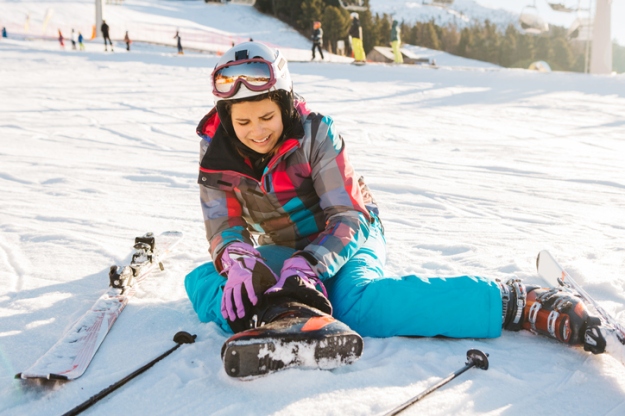The cold winter months are a great time to enjoy a variety of sports and activities in the snow and ice. However, this time of year presents a unique set of dangers and injury risks. No matter whether you enjoy high-adrenaline sports or winter hikes, you must pay attention to potential hazards that could lead to some nasty injuries.
Even though many of us know that there are lots of risks involved in skiing, sledding, and other winter sports, we frequently let the excitement take over and don’t exercise proper caution. As a result, every year, thousands of people are hospitalized because of winter sports-related injuries. In this post, we will take a closer look at the top four most common winter sports-related injuries and how to avoid them.
Concussion
It comes as no surprise that head injuries are widespread in winter sports. The combination of rapid movements and unseen obstacles are a recipe for trouble, even for the most experienced skiers, snowboarders, and tobogganers. But it isn’t just these downhill sports that carry risks; slips and falls on the ice can also lead to head injuries.
The first thing you should do is be mindful of your surroundings and don’t go too far outside of your comfort zone. If you do hit your head, however, it is important to get prompt medical attention, especially if you have any of the following symptoms:
- Blurred vision
- Dizziness
- Confusion
- Nausea and vomiting
While falling over is part and parcel of any winter sport, it is vital that you always wear the appropriate safety equipment, such as a helmet.

Back Injuries
The sudden movements and the extra work you demand of your body puts a lot of strain on the ligaments and muscles in your back. A muscle strain or sprain is very painful and will keep you out of action for many weeks. If you notice a twinge, make sure you stop what you are doing immediately and rest. Failure to do so will lead to more damage.
If you are a more advanced skier, you will be heading higher up the mountains. These more challenging runs test our bodies to the limit, and one mistake can lead to a serious fall. In these cases, you at high risk of suffering from a spinal injury, which could have a significant impact on your life.
Therefore, you should always ski on slopes that suit your skill level. Make sure you warm up before you head out. If you are skiing in a new area, take the time to familiarize yourself with your surroundings.
Arm and Shoulder Injuries
Arm and shoulder injuries are other common injuries during the winter season due to the increased risks of slips and falls. Dislocated shoulders are particularly nasty injuries, as they can have an impact on the surrounding muscles and ligaments. While skiers are generally more at risk, you could just as easily dislocate your shoulder while skating or walking on icy surfaces.
While it is difficult to completely prevent a fall, you should try to avoid outstretching your arms if you do fall, as this can increase the risk of injury. Make sure you wear appropriate clothing and equipment to ensure the full range of motion of the arms and shoulders while doing activities.
Leg Injuries
The joints of our legs are asked to work really hard during the winter months, so it is vital to ensure that we look after them as best we can. Sudden twists and turns can result in ankle and knee injuries, which will keep us off the slopes (and work) for a long time. Sprains and strains are very common, and in more severe cases, people may break bones, suffer fractures, or sustain ligament damage.
If you notice any pain, you should start resting immediately. If you have a minor injury, rest and ice packs should take care of the pain. However, more serious conditions may require prompt medical attention. No matter what sport you do, you should always wear appropriate clothing and footwear, while making sure you warm up and don’t push yourself too hard.
